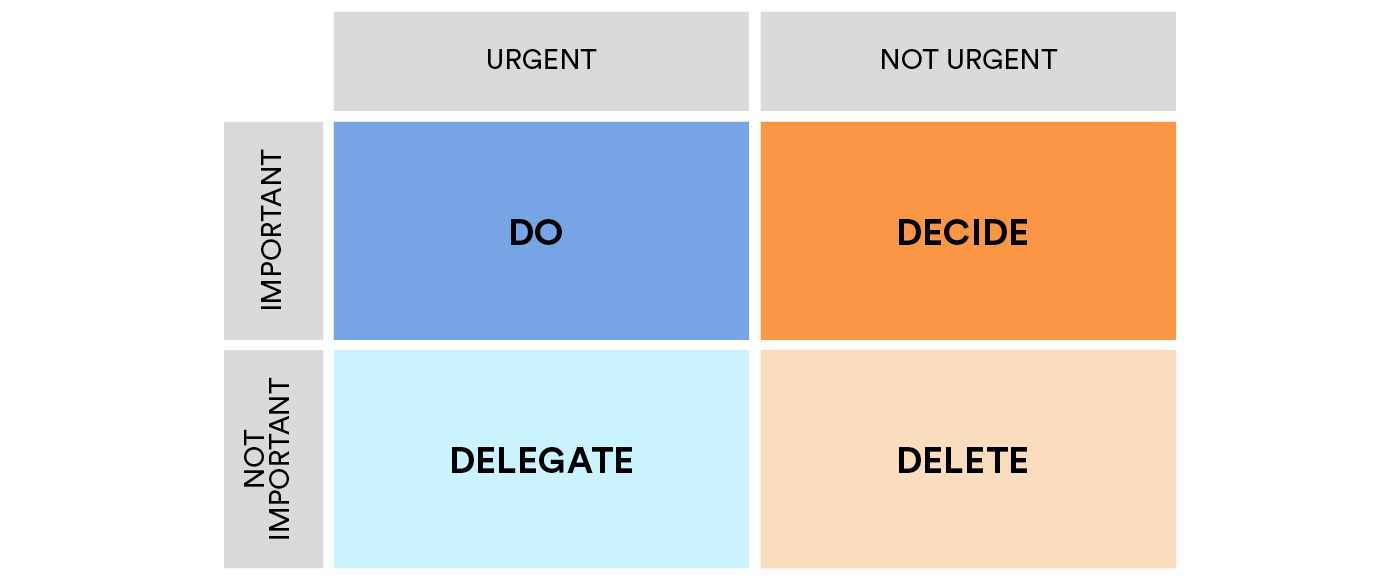To be competitive we need to have skills, be part of a close-knit team, have a strong work ethic and perform as efficiently as possible in the shortest amount of time. In a nutshell we must become perfect workers, regardless of the workload or unforeseen situations that may arise (think Covid-19 emergency).
While the first three items are a mix between study, company organisation and personal attitude, the fourth one is a key factor that represents a necessity and can be improved. Every day, many people have to deal with and coordinate many activities in a short space of time.
This is where priority management and time management come in. These two planning processes, if implemented correctly and customized to one’s goals, can improve work efficiency.
In this section we focus on priorities.
The Eisenhower (or Covey) matrix
What is important is seldom urgent and what is urgent is seldom important.
Dwight D. Eisenhower
One of the most popular methods of prioritisation comes from a quote by the 34th President of the United States and is based on the difference between importance and urgency.
Important activities are those that are necessary, non-negotiable and useful for achieving an outcome, both individually and in business. The more prioritised the objective is, the more important the activity will be.
The assessment should therefore take into account several factors, considering one’s own task list, personal projects and team and company objectives.
Urgent activities are based on deadlines.
Eisenhower’s philosophy has been summarised by Steven Covey in a matrix, which allows activities to be grouped into four quadrants:

This matrix can be used to plan daily (or weekly) activities, the necessary steps to complete a project or a team’ s workflow.
The main problem is how to give the right importance to the different activities, especially if you are new to time management. How do you solve the dilemma? By using the process over and over again, until you find the right balance for your type of work.
You can start by printing out the matrix, writing your tasks on simple post-it notes and sticking them to it, moving them around if necessary or throwing them away when finished. Fix your template to your desk dividing screen or office notice board and you’re done!
Management according to complexity
Another popular way of managing priority is based on the complexity of tasks and has been theorised in several studies.
The most simplified version suggests classifying them into three categories:
- Highest complexity – These are activities that require many linked steps, concentration and a longer time than others. The most complex projects can also consist of several tasks, which can be broken down into steps.
- Medium complexity – Tasks are slightly less complex and consist of fewer steps.
- Low complexity – Tasks are easy to complete and consist of a single step (or a few steps). They are often routine tasks, which do not require much concentration.
Prioritisation according to complexity recommends always starting with the most important and complex tasks, leaving the simplest ones to last, simply because at the beginning of the working day you are more energised and less tired.

